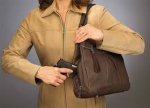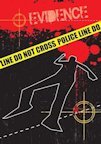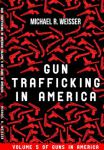This week the Colorado legislature showed itself to still have enough members with brains to beat back the annual brain-dead attempt to ‘restore’ gun ‘rights’ to the good citizens of the Centennial State. The Colorado GVP community shot them all down. You may recall that in 2014 Colorado expanded background checks to cover private transactions, and while the pro-gun strategy this year did not include an attempt to repeal the background check law, it did include Gun Nation’s favorite gun-rights ploy; i.e., permitless concealed-carry, including on school grounds.
 Speaking of the joys and virtues of concealed carry, our friends at the Violence Policy Center have just updated their website which contains data on gun fatalities committed by CCW-holders, with the number now standing at 863 non-defensive deaths since 2007. Since there is no official count for how many of the 31,000+ gun deaths each year occur thanks to someone using a gun that was being legally carried around for self-defense, we have to assume that the VPC number is far below the real number, but that’s not the point.
Speaking of the joys and virtues of concealed carry, our friends at the Violence Policy Center have just updated their website which contains data on gun fatalities committed by CCW-holders, with the number now standing at 863 non-defensive deaths since 2007. Since there is no official count for how many of the 31,000+ gun deaths each year occur thanks to someone using a gun that was being legally carried around for self-defense, we have to assume that the VPC number is far below the real number, but that’s not the point.
The point is that I have been listening to this crap about the millions of times each year that legal CCW-holders use their guns to prevent crimes, and if this is really true, then what’s the difference if a few hundred or even a few thousand people kill themselves or kill someone else with their concealed-carry guns? One of the brain-dead legislators in Colorado explained why state residents should be able to bring permitless concealed-carry guns into schools in the following way: “I, for one, am tired of sending my daughters to school on blind faith that they will return home from a place where people are prevented by state law from equipping themselves to protect my daughters.” Okay, so this friggin’ dope can go lay brick.
But to give the all dopes their due, I decided to look into the situation a little further by trying to figure out whether, in fact, all these people walking round with a concealed gun are making our communities more safe. And what better place to examine the situation than in Florida because, after all, the whole concealed-carry movement first erupted in the Gunshine State. And according to the Florida Department of Agriculture, which issues CCW, there are now 1.5 million active concealed licenses, so Florida must be a pretty safe place, right?
Wrong. Let me give you a few numbers. In 2011, the metropolitan area with the highest violent crime rate in the entire United States wasn’t Chicago, wasn’t Philadelphia, it was Miami, Fort Lauderdale and Pompano Beach. In 2014, that wonderful family vacation spot known as Orlando had a higher violent crime rate than Chicago or New York. I could go on like this but the truth is that the massive armed citizenry in Florida hasn’t been worth a damn when it comes to keeping the good citizens of that state free from crime.
But let’s drill down a little further and look specifically at the issue of how CCW guns are actually used for or against the commission of crimes. According to the VPC, there have been at least 21 Floridians killed by CCW-holders since 2013, an average of 7 each year. On the other hand, justifiable homicides, have averaged roughly 23 per year in Florida since ‘Stand Your Ground’ was passed in 2005. But while gun homicides have increased since SYG, no other violent crime category showed any real change at all.
Now wait a minute. I thought the whole point of concealed-carry is to make communities safe. So how come in Florida of all places the number of people getting legally killed with guns keeps going up but the crime rate doesn’t go down? Here’s the bottom line and you don’t have to be a rocket scientist to understand what it means. Know what happens when more people walk around with guns? More people get killed. Gee, that was hard to figure out.





Recent Comments